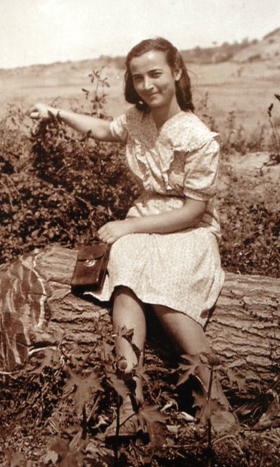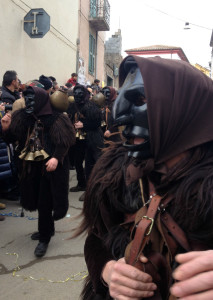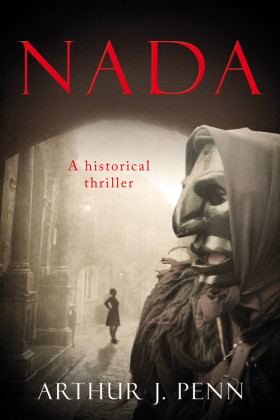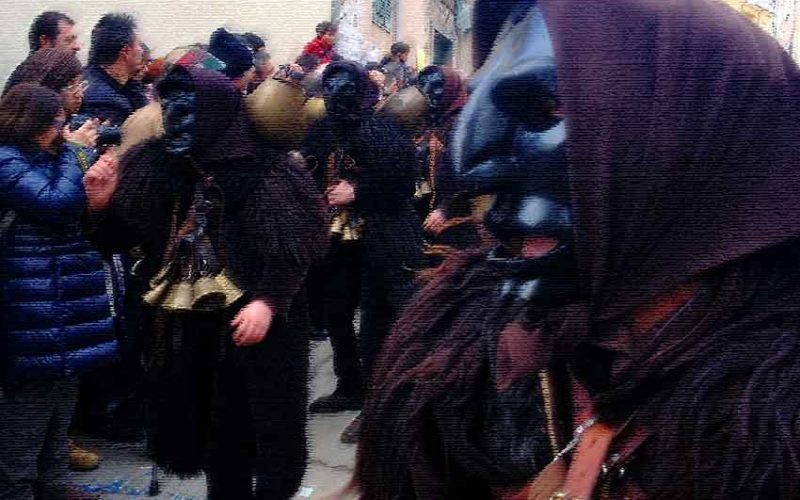Sardinia is an island of stunning beauty with a deep, enigmatic past.
A poisonous shrub grows in Sardinia’s hills, which at death freezes its victim’s mouth into a hideous grin. The Greeks called it sardonion, the origin of our word sardonic.
Fine sand and turquoise inlets caress Sardinia’s beaches. Yet inland, frightful masked figures called Mamuthones reign over Carnival.
Late-blooming novelist Arthur J. Penn taps into Sardinia’s splendor and mystery for his first outing, Nada, a political thriller set during Mussolini’s rise to power.
Synposis of Nada
Nada is a twisting labyrinth with Eleanor Cardinale, an innocent and intelligent young woman, at its center and a finale that will shock you. The book’s title refers to a print by Goya from a series called The Disasters of War.
Eleanor loves her gypsy boyfriend, Edo, adores her Jewish foster-father, Vito, and worships her brother, Marco. But she lives in 1930s Italy, where Mussolini is everyone’s hero. Il Duce—grand orator, defender of The Faith, charismatic tyrant.

But few Italians see the latter and Eleanor’s doubts about Il Duce bring her closer and closer to danger. Pluralism such as Eleanor’s cannot be tolerated.
The first half of Nada reads like a travelogue, replete with gorgeous descriptions Sardinia’s food and countryside. Arthur J. Penn lavishly expresses his love for the island.
But small, nasty acts multiply and you know something will soon go murderously wrong.
After Marco joins Mussolini’s elite ranks, several tragedies propel Eleanor from Sardinia to Spain in the fight against fascism. Brother and sister are at odds.
Throughout the buildup to world war, Eleanor must find her voice, her courage, and her spirit. Her choices will astonish you, yet she ultimately remains true to her deepest convictions and humanity.
I found everything about Nada—its setting, its characters, its political era—intriguing.
Q&A with Arthur J. Penn
You clearly have a deep passion for Sardinia and its history, Arthur. Where did it originate?
My wife Kate’s sister, Rebecca, married Mario, a Sardinian, 30 years ago. They run a very successful pizzeria in Southport [northwest England].
They also built a holiday home near Sassari and I have taken my family there for 25 years. Over that time, I’ve gotten to really know Mario’s family, the island, and its wine, food, and festivals.
I’ve always had a passion for history. It has grown through my work as a teacher of art, and later as an advisor training teachers in art and the history of art.
What drew you to this period?
I have always been interested in the Spanish Civil War, but knew less about Italian history of the same period.
I found contrast between the revolutionary freedom of women and iconoclasm of the left in Spain, and the repression of women and totalitarianism in Italy at the same moment, stark and compelling.
I wanted to write a story about a young woman’s journey from chains to freedom, innocence to experience, using these contrasts as a vivid backdrop.
How long did it take you to write Nada? How much research did you do?

Nada took two years to research and one to write. Clearly not full-time, but a lot of time.
I started when I was semi-retired so could devote two to three days a week to the research. Indeed the research took me over and I loved it. It was a struggle to stop and start to actually write.
The Internet was amazing, of course, but I needed real books to read and annotate. I found texts in second hand bookshops; the story gave me a hook for browsing. Great fun.
I also exploited my years of firsthand experience of Sardinia. I had many memories and pictures, but I needed to go back and revisit some of the key images—the Mamuthones and the festival in Mamoiada, and the Candelieri in the Sassari churches.
Those Mamuthones. I get the shivers just thinking about them. Do you have any theories about their origins?
Nonna recounts all the theories about the Mamuthones to the young Eleanor. Some say the festival celebrates the Christian defeat of the Moors.
I believe Nonna when she says they are from a much earlier primitive period. They are genuinely scary and demonic. The bells of hell.
Like so many Christian festivals they have been built on ancient pagan rites and rituals.
I particularly like my original photo of the Mamuthones that I took at the festival in Mamoiada. The jacket designer really liked it too and used it for the cover design.
I had stepped forward in front of the lurching figures only for the bells to swing and knock my camera phone from my hands. In the crush I managed to catch it again. The revenge of the Mamuthones!
 I can’t get Nada‘s shocking finale out of my head. Many authors would have backed away from it.
I can’t get Nada‘s shocking finale out of my head. Many authors would have backed away from it.
I am glad you were satisfied with the ending, although I have started a sequel with a twist. Still thinking about it, but I just couldn’t leave Eleanor.
I’m so pleased Eleanor’s story will continue! Do you have any advice for late-blooming writers about persevering in their craft?
They say everyone has a book in them. It helps having an author daughter who uses e-publishing very successfully.
I would say that you need to write from the heart because you want to and not from any financial imperative. There is a world of difference between writing and getting published and enjoying success. So you need to be pretty altruistic.
Also, it is never too late to bloom. We had roses out at Christmas this year!
Considering the weather in England recently, that’s saying something. Thank you, Arthur.
 Arthur J. Penn spent many years encouraging creativity in children and teachers through his work in schools in Britain and internationally. As a county art and design adviser, his art packs supported the study of artists across many cultures, and explored the stories and meaning in art.
Arthur J. Penn spent many years encouraging creativity in children and teachers through his work in schools in Britain and internationally. As a county art and design adviser, his art packs supported the study of artists across many cultures, and explored the stories and meaning in art.
His own creative work spans sculpture, painting, etching, drawing, as well as illustration.
Arthur lives in the Cotswolds, England with his wife, Kate, their Labrador and two cats. You can discover more about his work here. Nada is available through Amazon US and UK.
